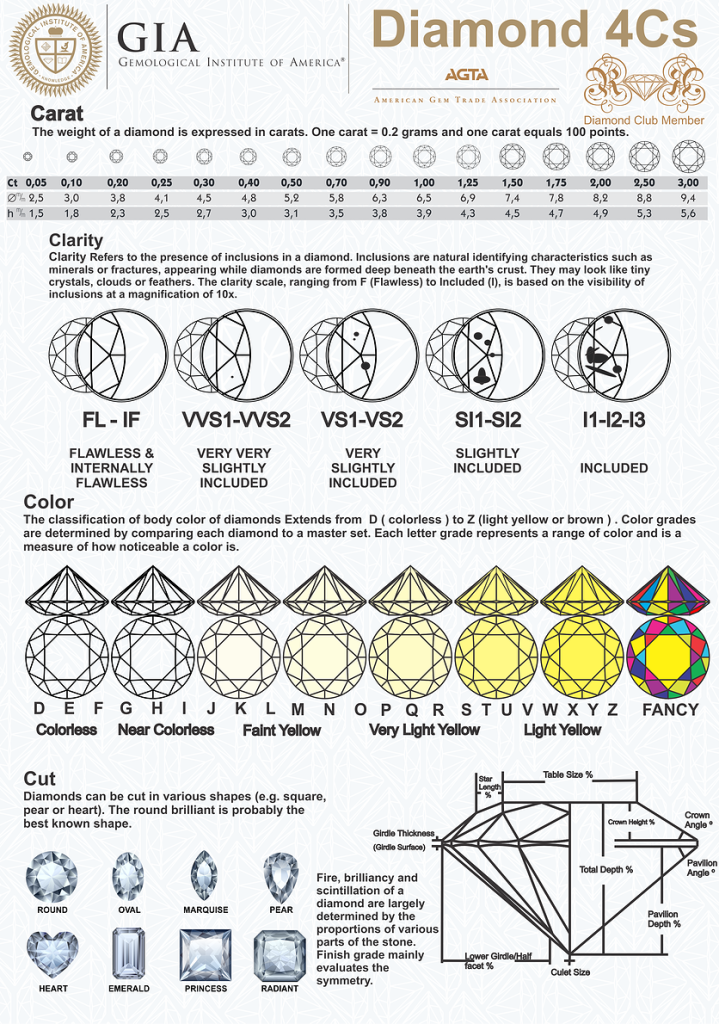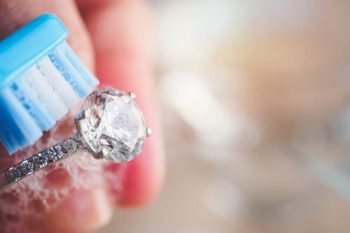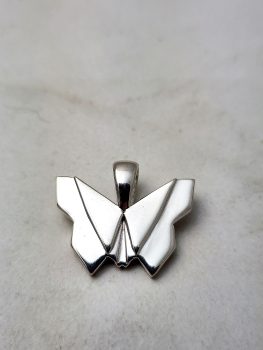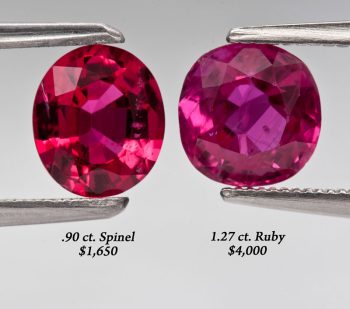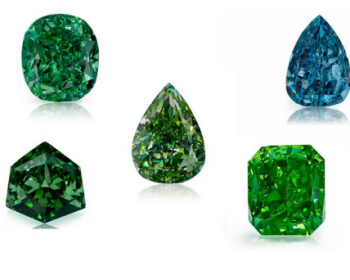4 C’s Of Diamonds are not really as intimidating as some might think. With a little explanation and guidance, you can help to even the playing field when shopping for a diamond. In this post, we will tell you what to look for when choosing a diamond and how to get the most bang for your buck.
What Is The 4 C’s Of Diamonds?
The 4 C’s of diamonds have a rich history. They were first introduced by the Gemological Institute of America (GIA) in the 1940s as a way to standardize diamond grading. The 4 C’s stand for cut, color, clarity, and carat weight. Each of these factors plays a crucial role in determining the quality and value of a diamond. Understanding the history of the 4 C’s can help consumers make informed decisions when purchasing diamonds.
The concept of diamond grading dates back much further than the 1940s, but it was the GIA that revolutionized the industry with the introduction of the 4 C’s. Prior to this, there was no standardized system for evaluating diamonds, which made it difficult for consumers to compare and assess their quality. The GIA’s system provided a consistent framework that allowed for more accurate and reliable diamond grading.
The 4 C’s of diamonds have since become the industry standard and are widely recognized and used by jewelers and consumers alike. Cut refers to the way a diamond is shaped and faceted, which affects its brilliance and sparkle. Color refers to the presence of any tint or hue in a diamond, with the most valuable diamonds being colorless. Clarity measures the presence of any internal or external flaws in a diamond, with flawless diamonds being the rarest and most valuable. Carat weight simply refers to the size of a diamond, with larger diamonds generally being more valuable.
We will describe each of the 4’C in more detail below.
Cut
The diamond cut grade refers to the quality of a diamond’s cut, which directly affects its brilliance and sparkle. It is an important factor to consider when purchasing a diamond because a well-cut diamond will reflect and refract light in a way that maximizes its beauty. The cut grade takes into account various factors such as the proportions, symmetry, and polish of the diamond. A higher cut grade indicates a diamond that has been cut to precise standards, resulting in exceptional light performance. Therefore, understanding the diamond cut grade is crucial in selecting a diamond that will truly dazzle and stand out.
A diamond’s cut grade is important because it greatly impacts its overall appearance and value. A well-cut diamond will have optimal proportions and symmetry, allowing light to enter and exit the stone in a way that creates maximum brilliance and fire. On the other hand, a poorly cut diamond may leak light, resulting in a dull and lifeless appearance. By considering the cut grade, buyers can ensure that they are investing in a diamond that will showcase its beauty to the fullest.
Furthermore, the cut grade also affects the diamond’s value. Diamonds with higher cut grades are generally more valuable because they require skilled craftsmanship to achieve. A diamond that has been cut to precise standards will have a higher price tag compared to one with a lower cut grade. Therefore, understanding the diamond cut grade can help buyers make informed decisions and ensure that they are getting the best value for their money.
By understanding the cut grade, buyers can choose a diamond that will truly shine and maximize its beauty. Additionally, the cut grade also affects the diamond’s value, making it crucial for buyers to consider when making a purchase.
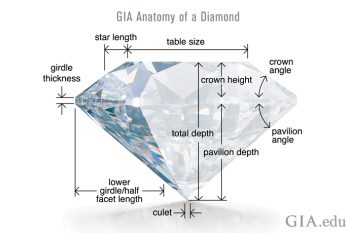
Color
Diamonds, known for their brilliance and beauty, can sometimes exhibit yellow or gray tones. These tones are caused by impurities or structural defects within the diamond’s crystal lattice. Impurities such as nitrogen can give diamonds a yellow hue, while structural defects can result in gray tones. The presence of these impurities or defects can affect the diamond’s color and ultimately its value. However, it is important to note that not all diamonds with yellow or gray tones are of lower quality, as some individuals may prefer these unique color variations.
The diamond color grade is a scale used to assess the color of a diamond, ranging from D (colorless) to Z (light yellow or brown). It is important because the color of a diamond greatly affects its value and appearance. A higher color grade usually indicates a more valuable and desirable diamond.
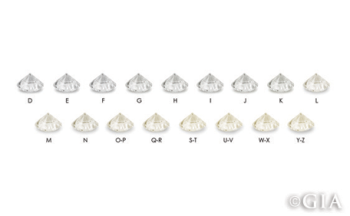
Clarity
A diamond clarity grade refers to the evaluation of a diamond’s internal characteristics and external blemishes. It is an important factor in determining the overall quality and value of a diamond. The clarity grade is assigned based on the number, size, nature, and location of these imperfections. The higher the clarity grade, the fewer the imperfections, and the more valuable the diamond becomes. A diamond with a high clarity grade will have excellent transparency and brilliance, allowing more light to pass through and creating a stunning visual appearance. Therefore, understanding the diamond clarity grade is crucial when making a purchasing decision to ensure you are getting a high-quality diamond.

Inclusions
Diamonds are known for their brilliance and beauty, but they are not always perfect. In fact, most diamonds have small imperfections known as inclusions. These inclusions can vary in size, shape, and color, and they can affect the diamond’s clarity and value. There are several types of diamond inclusions that are commonly found in diamonds.
One type of inclusion is called a feather. Feathers are small cracks or fractures within the diamond that can resemble the shape of a feather. They can vary in size and can be white or transparent. Feathers are usually caused by the stress that the diamond undergoes during its formation deep within the earth. While feathers can affect the clarity of the diamond, they can also create unique patterns and designs that some people find appealing.
Another type of inclusion is called a pinpoint. Pinpoints are tiny crystals that are trapped within the diamond. They can be white, black, or colored, and they can vary in size. Pinpoints are often caused by minerals or other foreign materials that become trapped during the diamond’s formation. While pinpoints are usually not visible to the naked eye, they can affect the diamond’s clarity and value.
Lastly, there are also inclusions known as clouds. Clouds are clusters of tiny pinpoints or feathers that are closely packed together. They can appear white or transparent and can vary in size and density. Clouds are usually caused by the presence of gases or other impurities during the diamond’s formation. While clouds can affect the clarity of the diamond, they can also create a unique and interesting appearance.
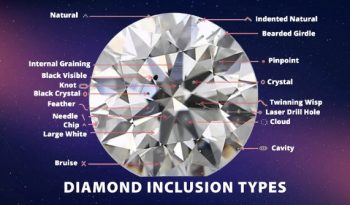
Diamond Carat Weight
Diamond carat weight is an important factor to consider when evaluating the quality of a diamond. Carat weight refers to the size and weight of the diamond, with one carat equaling 200 milligrams. The carat weight of a diamond directly affects its value, as larger diamonds are generally more rare and desirable.
In the 4 C’s of diamonds, carat weight is one of the key factors used to determine the overall quality and value of a diamond. Along with color, clarity, and cut, carat weight helps to assess the uniqueness and worth of a diamond. While carat weight alone does not determine a diamond’s beauty, it does play a significant role in its overall appearance and desirability.
When considering carat weight, it is important to note that a larger diamond does not necessarily mean a better diamond. The value of a diamond is determined by a combination of factors, and each individual’s preferences may vary. It is always recommended to consult with a reputable jeweler or diamond expert to find the perfect balance of carat weight and other diamond characteristics that best suit your personal style and budget.
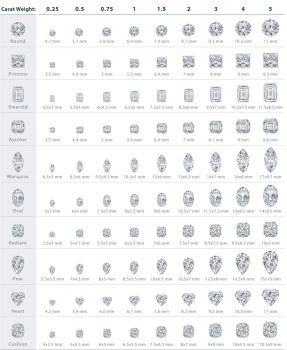
How To Get The Best Diamond For Your Money
When it comes to buying a diamond, getting the best value for your money is crucial. Here are a few tips to help you make a wise purchase.
Firstly, educate yourself about the 4Cs – cut, color, clarity, and carat weight. These factors determine the quality and value of a diamond. Look for a diamond with a good cut, as it affects the diamond’s sparkle and brilliance. Consider a diamond with a slightly lower color grade, as it can still appear colorless to the naked eye but at a more affordable price. Opt for a diamond with a higher clarity grade, as it will have fewer visible flaws.
Diamond prices are not linear. This means a 1 carat does not cost twice as much as a half carat. And weights such as half, 1, 1.5, 2, etc are what s known as “magic numbers”. A diamond “magic number” refers to a specific carat weight that is considered desirable and valuable in the diamond industry. This means that you can save money buying right under one of these magic numbers. For example, a .96 carat stone will cost less than a 1 carat with the exact same specs. And you will generally not be sacrificing any face size with a difference of .04 carats.
Secondly, shop around and compare prices from different jewelers. Don’t be afraid to negotiate and ask for discounts. Look for reputable jewelers who offer certified diamonds, as this ensures the authenticity and quality of the stone. Consider buying online, as online retailers often have lower overhead costs and can offer competitive prices.
We Create Custom Jewelry
We create jewelry from the ground up. This means that we source any diamonds specifically for your project. Consequently, you will have access to every diamond available at the time. This is unlike a retail store, where you will be limited to what is on hand.
Check out our custom pendants and rings. Then, contact us with your idea.
